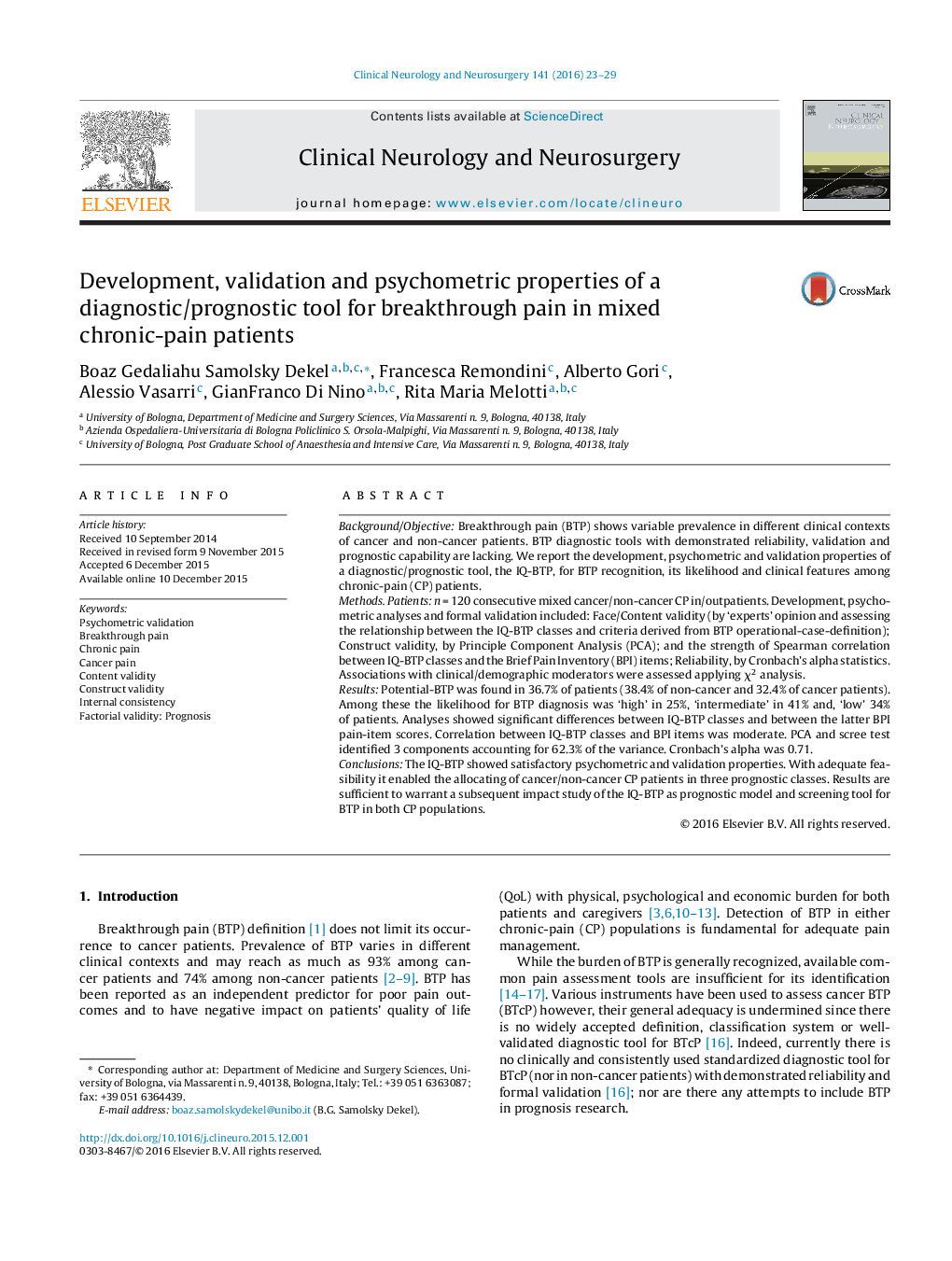| Article ID | Journal | Published Year | Pages | File Type |
|---|---|---|---|---|
| 3039574 | Clinical Neurology and Neurosurgery | 2016 | 7 Pages |
•Breakthrough pain (BTP) shows variable prevalence among chronic pain patients.•BTP diagnostic/prognostic tools are lacking; this hampers BTP management.•The validated IQ-BTP enables BTP recognition and its likelihood definition.•The 3 BTP prognostic classes have clinical and epidemiological implications.
Background/ObjectiveBreakthrough pain (BTP) shows variable prevalence in different clinical contexts of cancer and non-cancer patients. BTP diagnostic tools with demonstrated reliability, validation and prognostic capability are lacking. We report the development, psychometric and validation properties of a diagnostic/prognostic tool, the IQ-BTP, for BTP recognition, its likelihood and clinical features among chronic-pain (CP) patients.Methods. Patientsn = 120 consecutive mixed cancer/non-cancer CP in/outpatients. Development, psychometric analyses and formal validation included: Face/Content validity (by ‘experts’ opinion and assessing the relationship between the IQ-BTP classes and criteria derived from BTP operational-case-definition); Construct validity, by Principle Component Analysis (PCA); and the strength of Spearman correlation between IQ-BTP classes and the Brief Pain Inventory (BPI) items; Reliability, by Cronbach's alpha statistics. Associations with clinical/demographic moderators were assessed applying χ2 analysis.ResultsPotential-BTP was found in 36.7% of patients (38.4% of non-cancer and 32.4% of cancer patients). Among these the likelihood for BTP diagnosis was ‘high’ in 25%, ‘intermediate’ in 41% and, ‘low’ 34% of patients. Analyses showed significant differences between IQ-BTP classes and between the latter BPI pain-item scores. Correlation between IQ-BTP classes and BPI items was moderate. PCA and scree test identified 3 components accounting for 62.3% of the variance. Cronbach's alpha was 0.71.ConclusionsThe IQ-BTP showed satisfactory psychometric and validation properties. With adequate feasibility it enabled the allocating of cancer/non-cancer CP patients in three prognostic classes. Results are sufficient to warrant a subsequent impact study of the IQ-BTP as prognostic model and screening tool for BTP in both CP populations.
